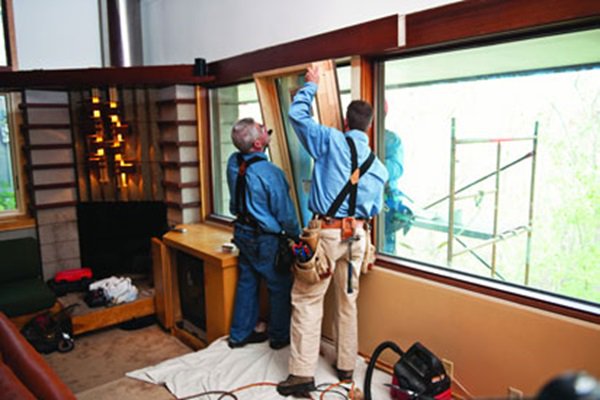


This past winter has been a pretty harsh one. Between the high winds, heavy snowfall, and fluctuating temperatures, your Michigan home may have suffered some damage. Older windows, especially, are prone to damage in the winter. The sooner you identify and address window damage, the lower your chances of lasting consequences — like water damage and mold growth. Keep reading to learn how to assess your home windows for winter storm damage.
1. Check whether the glass moves.
Cracks in the glass are obviously a sign of storm damage, but the damage is not always this obvious. Press gently on each glass pane in your window. Do any of them move? If the window glass shifts at all within the sash, it is no longer tightly sealed. You can expect air and water leaks to start appearing soon, perhaps once the wind changes direction or a spring storm rolls in. Windows with loose glass are a safety hazardand are also inefficient. Although caulking the glass back into place is a good temporary fix, replacing the window is ultimately your best move.
2. Look for chipping wood and peeling paint.
If the windows were already beginning to deteriorate before winter, the winter weather may have been the final nail in the coffin, causing the paint to peel and the wood to chip. If you look more closely, you may notice that the wood is rotting and turning brown. Rotten wood is not an effective barrier between the interior of your home and the outdoors. If the rotten wood has not yet resulted in loose glass or air leaks, it will soon.
3. Assess moisture accumulation.
Sometimes, the inside of your windows may look okay, but the seal between the outer pane of glass and the exterior window sash may have failed after having been beaten around by a winter storm. To assess for this type of damage, look between the two panes of glass. If you notice any condensation between the two glass panes, then your windows are leaking. Condensation between the glass can lead to mold growthand additional window deterioration. Plus, windows that are leaking and accumulating condensation are no longer as energy-efficient as they should be. Replacement windows will lower the energy bills in your Michigan home.
4. Test the locks and latches.
Finally, check to make sure each of your windows opens, closes, latches, and locks properly. If the window sash has begun to deteriorate or the window has been knocked off square by a strong wind, the latch may not line up, or the window may not slide open in its sash like it should. In some cases, you may be able to simply have the latches or locks repaired — especially if the window is under warranty. However, if the latch failure is due to window deterioration on a larger scale, replacing your home windows is a better choice. Replacement windows that latch and lock properly are important for home security.
Winter can be hard on windows, especially if your windows were already showing signs of age before the weather turned cold. Spring is the perfect time to have your Michigan home windows replaced so they’re ready to face the challenges of the next year. Contact Renewal by Andersen to schedule a free, in-home consultation. Our technicians can help you assess the state of your current windows, too.